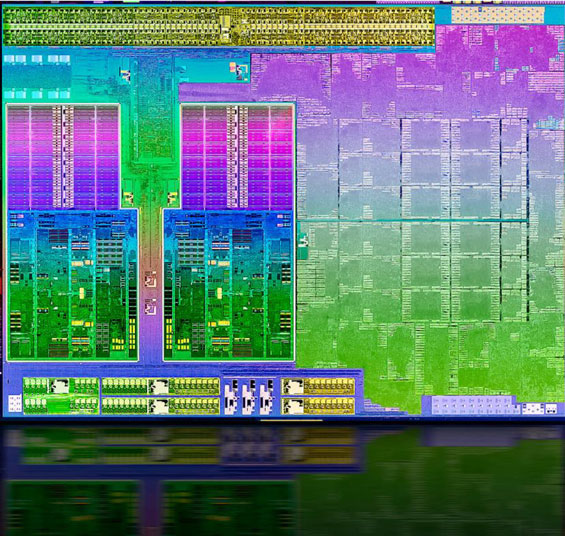AMD's A10-5750M Review, Part 1: The APU and Radeon HD 8650G Performance
by Dustin Sklavos on June 28, 2013 12:00 PM ESTConclusion: Surprisingly Potent Refresh
Without getting into the nitty gritty of the MSI GX60 that houses our review APU, AMD's A10-5750M, it seems like AMD's new APU is a net victory...with some caveats.
I imagine at the time of Richland's development, graphics performance wasn't a huge concern. With Haswell, that performance target shifts a little bit, but as long as we're not heavily CPU-bound, AMD continues to offer superior mobile graphics. Richland seems to be most aggressively focused on shoring up the primary weakness of AMD's existing architecture: the CPU itself. Piledriver was a decent improvement on Bulldozer and, ironically, a mild one on Llano, but it's nowhere near enough. Bumped up clock speeds and improved turbo help close the gap at least a little bit, but we're still dealing with 35W AMD APUs struggling to hit the same performance levels at 15-17W Intel chips.
Arguably more impressive is that this refinement was possible at all. AMD was able to take Trinity, tune the silicon ever so slightly, and extract a healthy gain in CPU performance from it. Graphics performance seems to have held flat from Trinity, but an essentially free performance boost on the CPU is welcome.
I am, however, forced to address a few elephants in the room that are getting glossed over. As consumers, we need AMD to succeed. Lack of competition is showing in a major way: desktop Haswell is a joke, Haswell's GT2 IGP is a minor improvement yet promises to be the most common one in Intel's lineup, and Intel seems to be planning to mostly coast on Haswell for two years while focusing on Atom's successor.

Yet the ugly truth about Richland and Trinity before them is that these reviews are covering the fastest models available. A8 chips lose a third of their GPU hardware across the board, and A6 chips lose another third. If you do some quick and dirty math, that means that anything below an A10 is going to be almost directly inferior to Haswell or Ivy Bridge. Graphics performance will at best be slightly above parity, while CPU performance takes a bath.
The other problem is that AMD is still targeting 35W as the mainstream TDP, but that's a target that's actually quietly shifted in the marketplace. This isn't 2008 anymore and Intel isn't charging a fat premium for its low-voltage hardware. The market that needs 35W CPUs is shrinking, being devoured at the low side by tablets and systems with ULV CPUs that still offer enough performance to handle the majority of tasks end users will need them for. And anyone who needs more performance than that can simply make the jump to a system with a quad-core Intel CPU that has more muscle. In this reviewer's opinion, 35W isn't the target, it's the halo. 15W-17W is the target, and while AMD has offerings at those TDPs, they're woefully uncompetitive.
AMD doesn't just need Kaveri. We need Kaveri. We need the Steamroller architecture update, and we need the graphics cores to switch over to GCN from VLIW4. Hopefully AMD will be able to produce a Kaveri part that has a fighting chance against Intel at 15W/17W, since Kabini and Temash are destined for smaller form factors. For now, the Richland A10-5750M is a good option and a solid offering for a refresh, but I don't think anyone can rely on it as a stopgap for too much longer.










82 Comments
View All Comments
touristguy87 - Wednesday, April 9, 2014 - link
"AMD doesn't just need Kaveri. We need Kaveri."No, we don't. Maybe you need it, but the majority of the computer market certainly doesn't. This is why the desktop/laptop/notebook market is dying rapidly: people only upgrade their machines either when the machines die (because a component fails) or miraculously they find themselves in need of a much-faster machine. Short of that all they do is buy a new one to fill a need for a new one, and then the hardware is plenty fast enough for most needs most of the time. The big issue becomes price, because there's no need to spend $2500 for a top of the line laptop. Oh sorry, $1000. I'm thinking of 2000 prices, 2005 maybe.
Phones. Tablets at most. That is where the market is. 35W laptops are an afterthought. Especially running Windows 8, especially for gaming.
limbo90 - Saturday, September 13, 2014 - link
Currently I'm considering to take MSI GX60 3CC Destroyer laptop that comes with AMD A10-5750M and Radeon R9 M290X.... most review said that it is not a recommended laptop for gaming as for the AMD A10-5750M bottleneck issue with Radeon R9 M290X.... some said it is only suitable for single player game, not online gaming/online multiplayer... Any opinion on this laptop specs?